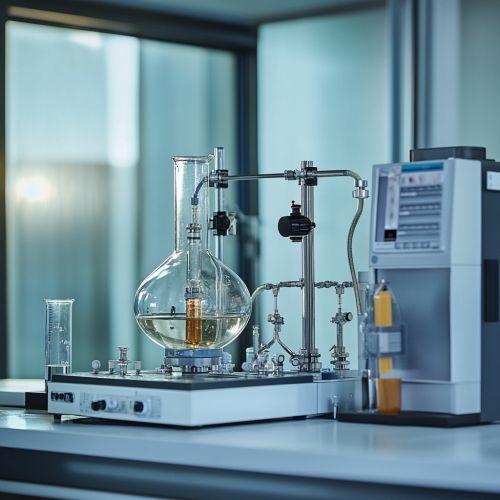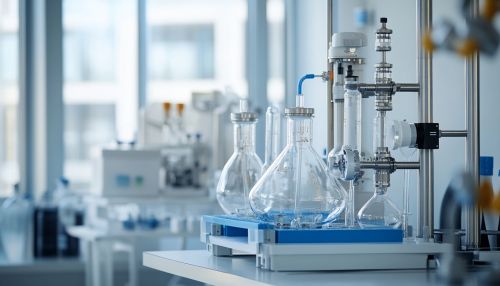History of Physical Chemistry
Introduction
The history of physical chemistry is a rich and evolving narrative that traces the development of the field from its early roots in alchemy to its current status as a fundamental branch of chemistry. Physical chemistry is the study of how matter behaves on a molecular and atomic level and how chemical reactions occur. It combines principles of physics and chemistry to understand the physical properties of molecules, the forces that act upon them, and their interactions. This article delves into the significant milestones, key figures, and groundbreaking discoveries that have shaped the discipline over centuries.
Early Foundations
Alchemy and Early Theories
The origins of physical chemistry can be traced back to the ancient practice of alchemy, which sought to transform base metals into noble metals like gold and discover the elixir of life. Alchemists, such as Jabir ibn Hayyan and Paracelsus, laid the groundwork for modern chemistry through their experimental techniques and the development of early chemical apparatus.
The Birth of Modern Chemistry
The transition from alchemy to modern chemistry began in the 17th century with the work of Robert Boyle, who is often considered the father of modern chemistry. Boyle's law, which describes the inverse relationship between the pressure and volume of a gas, was a significant step towards the establishment of physical chemistry. Boyle's emphasis on experimentation and quantitative measurement set the stage for future developments in the field.
Classical Physical Chemistry
Thermodynamics
The 19th century saw the formalization of thermodynamics, a branch of physical chemistry that deals with the relationships between heat, work, temperature, and energy. Key figures in this era include Sadi Carnot, who laid the foundation for the second law of thermodynamics, and Rudolf Clausius, who introduced the concept of entropy. Josiah Willard Gibbs further advanced the field by developing the Gibbs free energy equation, which predicts the direction of chemical reactions.


Kinetics
Chemical kinetics, the study of the rates of chemical reactions, also emerged as a crucial area of physical chemistry. The work of Ludwig Boltzmann and Maxwell on statistical mechanics provided a theoretical framework for understanding reaction rates. Svante Arrhenius introduced the concept of activation energy, which explains the temperature dependence of reaction rates.
Electrochemistry
Electrochemistry, the study of chemical processes that involve the movement of electrons, was significantly advanced by Michael Faraday. Faraday's laws of electrolysis quantified the relationship between the amount of substance produced at an electrode and the quantity of electric charge passed through the electrolyte. This field has profound implications for energy storage and conversion technologies, such as batteries and fuel cells.
Quantum Revolution
Quantum Mechanics
The early 20th century witnessed the advent of quantum mechanics, which revolutionized physical chemistry by providing a deeper understanding of atomic and molecular structure. Erwin Schrödinger and Werner Heisenberg developed the fundamental equations of quantum mechanics, while Niels Bohr proposed the Bohr model of the atom, which explained the discrete energy levels of electrons.
Spectroscopy
The development of spectroscopy, the study of the interaction of electromagnetic radiation with matter, allowed chemists to probe the electronic and vibrational states of molecules. Arnold Sommerfeld and Arthur Compton made significant contributions to the field, which has become an essential tool in physical chemistry for identifying substances and studying molecular dynamics.
Modern Physical Chemistry
Computational Chemistry
With the advent of computers, computational chemistry has become a vital sub-discipline of physical chemistry. This field uses computer simulations to solve complex chemical problems and predict the properties of new compounds. Pioneers like John Pople and Walter Kohn developed methods such as density functional theory (DFT) and Gaussian models, which have become standard tools in the field.
Surface Science
Surface science, the study of physical and chemical phenomena that occur at the interface of two phases, has significant implications for catalysis, materials science, and nanotechnology. Irving Langmuir and Gerhard Ertl made groundbreaking contributions to understanding surface reactions, which are crucial for industrial processes and environmental applications.
Chemical Dynamics
The study of chemical dynamics focuses on the detailed pathways and mechanisms of chemical reactions. Techniques such as femtochemistry, pioneered by Ahmed Zewail, allow scientists to observe chemical reactions on extremely short timescales, providing insights into the transition states and intermediate species involved in reactions.
See Also
- Thermodynamics
- Chemical Kinetics
- Electrochemistry
- Quantum Mechanics
- Spectroscopy
- Computational Chemistry
- Surface Science
- Chemical Dynamics
